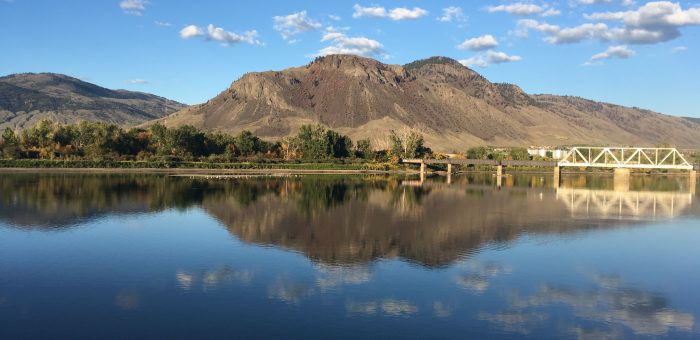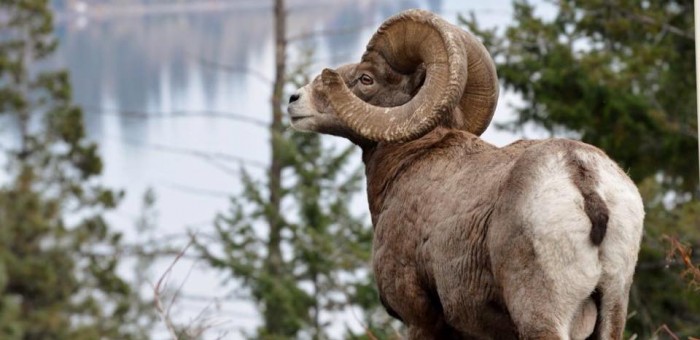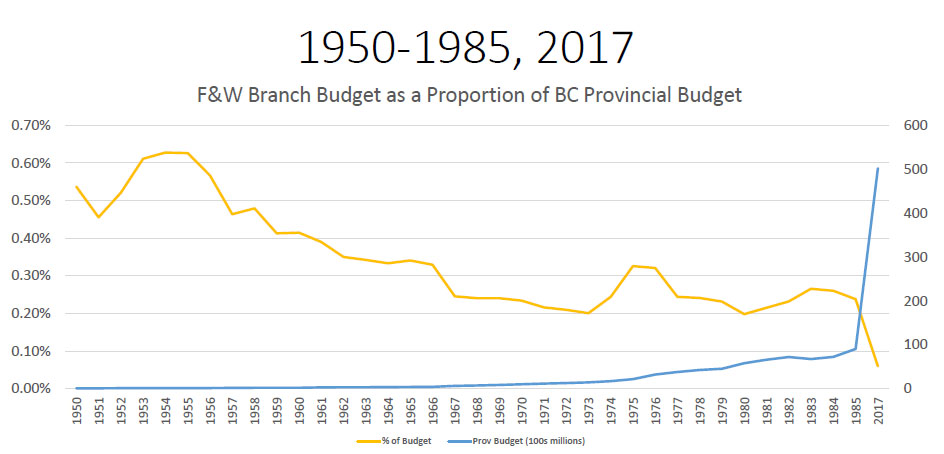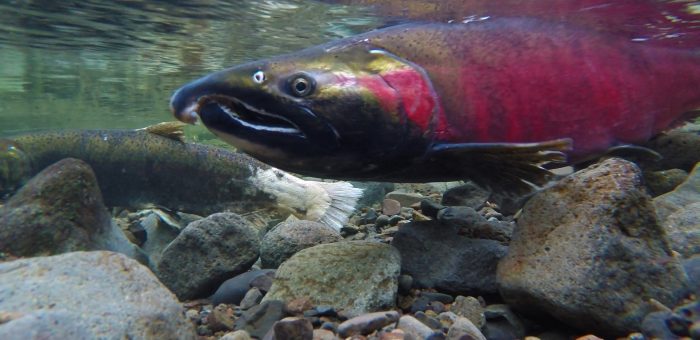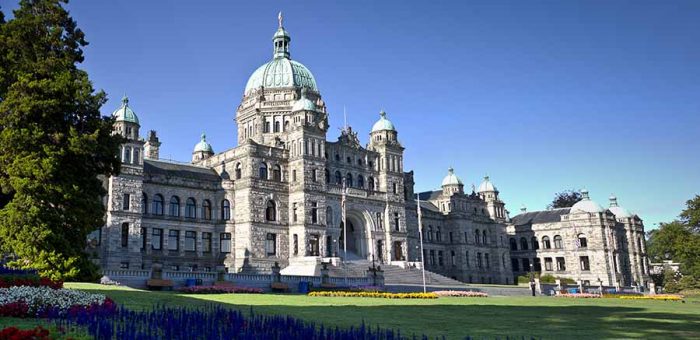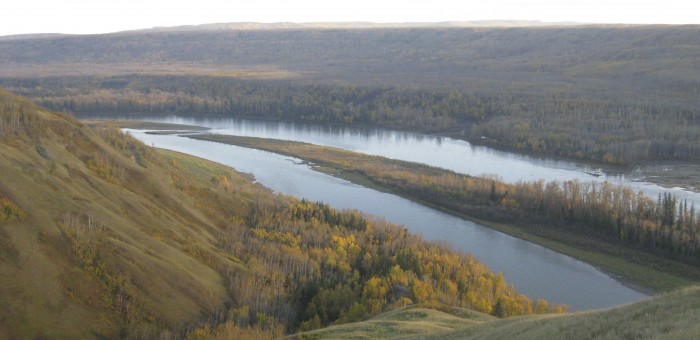Right to Roam and the BC Supreme Court
In an Epilogue to a recent groundbreaking ruling, B.C. Supreme Court Justice Joel R. Groves has urged the government to open up public access to lakes around the province.
It is an issue I advanced in the legislature with a Right to Roam private member’s bill tabled twice in 2017.
In my view, this recent ruling and the clear words spoken by Justice Groves underline the need for a law or regulations that will ensure future governments, unlike those previously, fulfill their duties to protect access to public land.
The BC Supreme Court has ruled in favor of public access to lakes on the Douglas Lake ranch, but the decision has implications far, far beyond that. All the lakes in B.C. are owned by the people – and the government needs to act to ensure access to those lakes.
In his decision, issued Dec. 7, Justice Groves ruled in favor of the Nicola Valley Fish and Game Club, which had challenged the Douglas Lake Cattle Company’s right to lock a gate on the road to Minnie Lake and Stoney Lake.
The Club argued the road was public and that the Douglas Lake Cattle Co. had illegally restricted access. The court agreed.
The ruling is expected to open up public access not just to Minnie and Stoney, but also possibly to other lakes on the sprawling Douglas Lake ranch, near Merritt.
In his ruling Justice Groves chastised a succession of provincial governments for allowing the public road on the ranch to remain locked for many years, despite pleas from the public for access to Minnie and Stoney lakes.
“All governing parties have shown a lack of action to enforce the public good,” the judge stated in his ruling.
“What I am saying is that there is plenty of blame upon all politicians and all political parties who have governed this Province since 1990.
“As such, I am not pointing a finger at any particular government individual but, again, it is most unfortunate that all governments holding the obligation of the public trust have failed to take any actions to prohibit what was an illegal obstruction of a public road by a corporate entity, for its own benefit.”
Justice Groves stressed that the government should work to ensure the public has access to lakes around the province.
“This case is about access to lakes,” he stated. “As I say in my reasons . . . it makes no sense to me that the Crown would retain ownership of lakes, only for there to be no access because someone owns initially through Crown grant, or subsequently by purchase, all the lands surrounding the lake,” stated Justice Groves.
He said the government should act to resolve the public access problem now before it gets worse.
“The remedy I am urging on government is this. First off, look at the Trespass Act…Secondly, if you own the lakes of the province, which you do, can you not regulate access? There really is no point to ownership otherwise. The ownership of lake beds is, no doubt in large part, intended to be collectively held for the benefit of all citizens of the province. As that is the case, consider doing what other jurisdictions have done and guarantee access to this precious public resource,” said Justice Groves.
That is precisely what I sought to advance last year when I introduced the Right to Roam Act. The bill aimed to reestablish the rights of British Columbians to access public lands, rivers, streams, and lakes, and to use these spaces to fish, hike and enjoy non-motorized outdoor recreation. Rather than expecting it to pass as drafted, I hoped my bill would further this important discussion in the BC legislature. I would be keen to see other MLAs weigh in on this issue as well.
This is not, and should not be a partisan issue. The government has a responsibility to manage crowns lands to the benefit – and critically the access – of all British Columbians.
It is time the BC government took steps to ensure that the public has the right to access lakes, rivers and streams on public lands. I’ve said it before and now the court has said it. It is time to start unlocking the gates.
Before it’s too late: British Columbia needs a science- and ecosystem-based approach to wildlife management
At the time of European contact, wildlife were so abundant in British Columbia that early explorers marveled at the richness of the land.
“The country is so crowded with animals as to have the appearance in some places, of a stall yard,” Alexander Mackenzie wrote in his journal in 1793 while on the Peace River. He reported seeing herds of elk on the grasslands near Bear Flat, the irreplaceable habitat that will be drowned when the Site C dam is constructed.
Just over a decade earlier, on the West Coast of Vancouver Island, Captain James Cook noted an abundance of sea otters. He traded pelts into China, sparking a rush for furs that didn’t abate until sea otter populations crashed. It was the first example, in what would become known as British Columbia, of economic forces eradicating a species.
Early European settlers established markets not only for furs, but also for the hides and meat of wildlife. The uncontrolled harvesting that followed soon led to the extirpation of Roosevelt Elk on the Lower Mainland and Wood Bison in northern B.C.
By the late 1800’s wildlife losses were so widespread the public began demanding an end to the free-for-all. In 1859 the first ordinances “providing for the protection of game” were passed in B.C. In 1905 the government organized wildlife management, establishing the Department for the Protection of Game and Forests, although it didn’t get funding until 1908. The annual budget: $10,000.
In 1933 Aldo Leopold, an American conservationist and writer, published Game Management, a book that has been credited with creating the discipline of wildlife management through the application of scientific principles. Indeed, his work planted the seeds of what would eventually become the North American Model of Wildlife Conservation.
One of the key tenets of the Model, which is now widely applied across the continent, is that science – not the dictates of special interest groups – should guide wildlife policy.
I have dedicated my life to understanding our world and its problems through science, but have been surprised at how difficult it is to convince governments to consistently follow scientific reasoning. While the concept of science-based wildlife management has generally been endorsed in B.C. it has not always been applied.
There have been successes. Sea Otters are making a comeback, elk herds are increasing in southern B.C. and bison were successfully reintroduced to some areas in the north. But its selective use has lead to more disasters.
Many wildlife populations are in jeopardy today. Mountain caribou are facing extirpation, wild salmon – a foundation species – are in shocking decline, spotted owls are virtually extinct, and moose populations, which many rural families rely on for sustenance, are in trouble across the province.
What we find in almost all of these instances is that there has been inadequate science, particularly concerning cumulative impacts, and that an unacceptable loss of vital habitat has occurred. The management of wildlife, and the application, or not, of scientific principles, continues to stir great controversy and emotional debate in B.C. Understandably so.
Wildlife management conflicts in which species are pitted against one another are truly challenging, but I have always maintained that humans – elected representatives in particular – have a moral obligation to prevent endangered species from going extinct.
Often, extreme situations are created because government has failed to act. They are typically situations that – for a variety of industrial, social, or budgeting excuses – have been allowed to escalate far past a point of simpler intervention.
When you start rationalizing culling one species to protect another you also introduce an ethical element that needs to be considered alongside scientific findings. Let one – or both – of those species become threatened or endangered, however, and your situation becomes immensely worse.
Some say that humans should not interfere with nature, but sadly, intervention is sometimes necessary. Simply put, many ecosystems have been altered so drastically that we can no longer just stand by and let nature take its course.
If we don’t continue to intervene with the mountain caribou crisis we are currently facing, for example, it will not be long before the remaining herds in the South Selkirk and Peace regions are extirpated.
We cannot let that happen.
Predator control, hunting closures, and restrictions that stop industries from undertaking resource developments are all difficult matters for governments to deal with.
But things aren’t going to get easier. The management of wildlife is becoming increasingly complex and fraught with risk.
Habitat loss is mounting.
The human population is growing.
Roads and pipelines have been spreading into the farthest reaches of the province, and researchers have discovered how such developments increase predation, shift wildlife distribution, and impact abundance.
Wolves, for example, use road and pipeline clearings to get a good line of sight on caribou, expanding into new territory to more efficiently track down their prey. Increased road densities and human activity in wilderness areas elevates human-caused mortality of grizzly bears and reduced the number of bears in the area, scientists at the University of Alberta have recently found.
In a paper published this week in the journal Conservation Biology, scientists wrote about threats to biodiversity from cumulative human impacts in B.C., “one of North America’s last wildlife frontiers.”
“Land-use change is the largest proximate threat to biodiversity yet remains one of the most complex to manage,” they wrote. “For ecosystems, we found that bunchgrass, coastal Douglas fir, and ponderosa pine have been subjected to over 50% land-use conversion, and over 85% of their spatial extent has undergone either direct or estimated indirect impacts.”
Adding to all these other stressors now is climate change. The full implications aren’t yet clear, but we cannot situate our wildlife strategies in the past. Our environment is changing and will continue to do so.
We must be prudent and precautionary as we manage our changing landscape as the planet warms. The timing and abundance of food availability, for instance, will shift for some plants and animals. Species reliant on their stability will need space and additional resources if they are to adapt.
Another challenge that will become increasingly present in B.C. is that of invasive species. Not species introduced from a faraway land, though that will continue to be an issue, but species that have migrated from nearby landscapes as their own native environment ceases to meet their needs — climate refugees, in a sense.
As certain areas become warmer, for example, native species may start to move north. How will we manage those newcomers if they are having a negative impact on our own resident species? What if the invasive species are threatened or endangered in their home ecosystem?
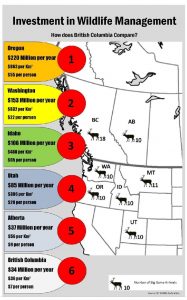 A few years ago, with concerns growing about how B.C. was managing wildlife in the face of growing pressures, the B.C. government assigned an MLA to do a comprehensive review of its policies.
A few years ago, with concerns growing about how B.C. was managing wildlife in the face of growing pressures, the B.C. government assigned an MLA to do a comprehensive review of its policies.
“There has never been a time in British Columbia’s history where balancing the cumulative impact of resource development and biodiversity has been so complex.” Liberal MLA Mike Morris wrote in his 2015 report, Getting the Balance Right: Improving Wildlife Habitat Management in British Columbia.
“There is an urgency and heightened concern amongst resident hunters, guide outfitters, trappers, the wildlife viewing industry and conservationists that the province is not acting quickly enough to address the decrease in wildlife populations and the degradation of wildlife habitat,” Morris wrote.
He called for more wildlife management staff and “better planning, better science and more timely and effective implementation of policies and programs.”
But the government never delivered.
“B.C. balks at changing law to protect wildlife and biodiversity” said The Vancouver Sun headline.
“The B.C. government will not be changing laws or considering hiring more staff as recommended in a report by one of its own MLAs on how to protect wildlife and biodiversity from the effects of resource industries,” the story said.
For far too long government has shortchanged wildlife management in B.C.
It’s fine for Ministers to say they support science-based decisions – but where is the science? Where are the field researchers? Where are the basic boots on the ground that are needed to keep a close watch on our wildlife populations and habitat?
The necessary funding just isn’t there.
B.C. ranks behind its neighbours in the northwest when it comes to investment in wildlife management. Alberta, Washington, Montana, Oregon, Idaho, Utah – all spend more on managing less.
The shameful underfunding of wildlife management has taken place under successive Liberal regimes. Now we have a new NDP government, but it has yet to show if it will fully embrace – and fund – science-based management.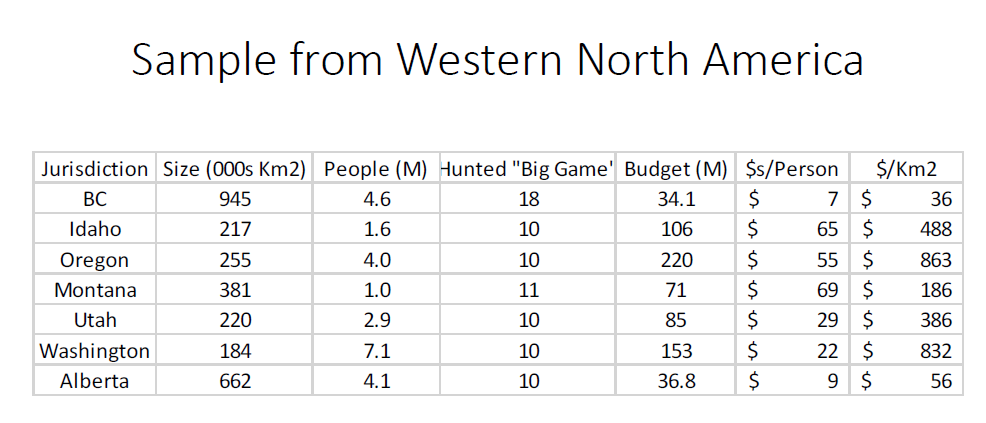
The problem is compounded because Ottawa too has been cutting back on wildlife science. In B.C. our wild salmon stocks are in decline, putting in jeopardy not only the economies of fishing communities, but also the health of killer whales, bears, eagles and other predators.
But a study published recently concluded, “there is inadequate information to determine the biological status of roughly one-half of all CUs ” in B.C.
CUs, or Conservation Units, are the system by which the federal government is supposed to monitor and manage our wild salmon stocks.
But Canada’s Wild Salmon Policy: an assessment of conservation progress in British Columbia reports that the government just basically gave up on collecting the data. We don’t know what is happening on the rivers because the government stopped keeping track.
“Our state of knowledge regarding salmon populations is eroding rapidly. Without increased support for escapement surveys and the transfer of knowledge to the next generation, the rich legacy of population data available for BC’s north and central coasts is at serious risk of becoming irrelevant for future assessments of management and conservation status,” states the study led by Simon Fraser University researchers Michael Price and John Reynolds.
B.C. is Canada’s most ecologically diverse province but if we are to maintain that rich biodiversity, we need to see a serious commitment to science-based, evidence-based wildlife management – and we need to have dedicated wildlife funding put in place, so managers have the budgets, and the staff, required to do the job.
As the Select Standing Committee on Finance and Government Services recommended in its Report on the Budget 2017 Consultations, license fees collected from natural resource users (hunters, anglers, ecotourists, etc.) should be directed into conservation and wildlife management services, rehabilitation, enforcement and education. In that, we must “prioritize and fund restoration and protection of endangered fresh and saltwater fish species and fisheries.”
Effective natural resource management is reliant on funding, science, and social support. We seem to have consensus on this within the B.C. government, but it needs to be put into action.
Prior to the election, I campaigned on establishing a Natural Resource Commissioner who could lead a Natural Resources Board responsible for establishing sustainable harvest and extraction levels and reporting on the state of B.C.’s environment and natural assets. The NRB, I proposed, would conduct cumulative impact assessments, and oversee the professional reliance model.
Since the election, the government has been working with us to improve the professional reliance model and B.C.’s environmental assessment process. We haven’t talked about creating a Natural Resource Commissioner position, but there is much we should to advance its values of scientific monitoring, reporting, and cumulative assessment.
Managing wildlife has always been difficult, but never more so than now, in the face of climate change. According to data released by scientists at NASA, 2017 was the second warmest year since record-keeping began in 1880, second only to 2016.
In the face of great challenges, it is clear to me that we need a comprehensive science- and ecosystem-based approach to wildlife management. We simply cannot continue to perpetuate the slow, methodical extirpation of native species in B.C.
Ecosystem-based management calls for natural resources, habitat, and species to be managed collectively, over a long time frame, rather than just looking at a single sector or single species.
Cumulative impacts are assessed – an approach which B.C. urgently must follow because of the sweep of industrial development now taking place in many sectors of the province.
Given the myriad challenges facing wildlife in our province, two of the best things we can do to protect biodiversity is to leave key habitat areas intact and fund environmental science. As the global climate warms and precipitation patterns shift, having a complete ecosystem within which animals and plants can try to adapt will be essential, and frankly it is the least we can do given the dire situation many species are in. Having an informed understanding of the changes taking place will help too.
It won’t be easy. But proactively protecting ecosystems – so we can all be resilient to the changes a warming climate will bring – is vital.
Fish Farms and the Need to Protect Wild Salmon
Last week I sent a letter to B.C.’s Minister of Agriculture seeking clarity as to what the B.C. government is planning to do to promote and facilitate the transition from ocean based, open net fish farms to land based closed containment systems. Today, I followed up with her in Question Period. As you will see from the exchange reproduced below, I was very pleased with the thoughtful answers provided by Minister Popham.
 Fish farms have long been contentious on the B.C. coast due to concerns about sea lice, disease, escaped non-native species, and the impact these contaminants are having on wild stocks – many of which are already significantly depleted. Tensions between some First Nations and operating farms have escalated in the last few weeks following a salmon spill near the San Juan Islands. While action on this file is long overdue, a responsible and effective move to protect our wild salmon stocks now seems especially urgent.
Fish farms have long been contentious on the B.C. coast due to concerns about sea lice, disease, escaped non-native species, and the impact these contaminants are having on wild stocks – many of which are already significantly depleted. Tensions between some First Nations and operating farms have escalated in the last few weeks following a salmon spill near the San Juan Islands. While action on this file is long overdue, a responsible and effective move to protect our wild salmon stocks now seems especially urgent.
The B.C. Green caucus position on fish farms has always been very clear. We need to get fish farms out of the migratory paths of wild salmon. And, at the same time, the provincial government needs to promote the establishment of closed-containment systems on land.
Prior to the last election, the B.C. NDP were also very clear about their commitment to shut down open-net farms and move to closed containment, land-based fish farms. They promised to implement the recommendations of the Cohen Commission as well. This past April, NDP North Island MLA Claire Trevena – now the Minister of Transportation and Infrastructure – told a gathering of indigenous leaders in Alert Bay that if elected, her party would remove fish farms from coastal waters. “We will remove fish farms, we are committed to that and we can actually form government to make this happen and make sure that these territories and the North island are clear of fish farms”
“It can happen here,” she said of a shift to land-based fish farming. “We will make sure it does.”
These are strong words. Unfortunately, jurisdictional divisions threaten to make this far easier said than done. The federal Fisheries and Oceans Canada (DFO) department is responsible for the regulation of most aspects of the aquaculture industry in B.C. The government of Canada issues licences for marine finfish, shellfish and freshwater (or land-based) operations. Licences stipulate the volume and species that may be produced at a site and outline requirements for fish health, sea lice levels, fish containment and waste control.
To complete that structure, the province of B.C. issues tenures where operations take place in either the marine or freshwater environment, licenses marine plant cultivation, and manages business aspects of aquaculture such as work place health and safety.
So, the province only has jurisdiction over one piece of the fish farm regulatory puzzle, but it is still an important one and there is still a lot of room for progress to be made. In collaboration with First Nations and the federal government the province can take it even further. The B.C. Green caucus remains committed to advancing this issue, and making sure the NDP government does the same.
The leading closed-containment Atlantic salmon company in Canada is Kuterra, based in Port McNeill and owned by the Namgis First Nation. Kuteraa received part of its funding from Tides Canada on the basis that it provide open access to its knowledge and since become an industry leader.
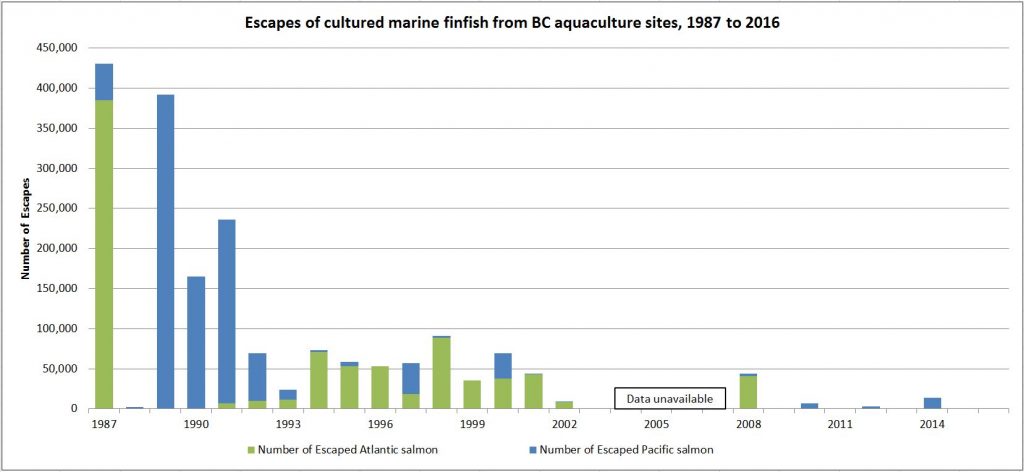 To their credit, the ocean based B.C. fish farming industry has taken measures to improve security and there have been very few escapes over the past five years. The last major escape of Atlantic salmon from a B.C. operation was in 2008 and the most recent significant fish spill was in 2014 when more than 13,000 farmed rainbow trout escaped from an operation at Brettell Point, near Powell River. This summer’s incident in U.S. waters, however, highlights the continued risk of farming Atlantic salmon in open net pens. Escaped salmon increase the risk of spreading disease to wild stocks, and heighten competition with wild Pacific salmon, which are endangered in many B.C. watersheds. It is time for governments to help the fish farming industry transition from open-net farms to closed containment land based facilities. It is time to prioritize the protection of wild salmon.
To their credit, the ocean based B.C. fish farming industry has taken measures to improve security and there have been very few escapes over the past five years. The last major escape of Atlantic salmon from a B.C. operation was in 2008 and the most recent significant fish spill was in 2014 when more than 13,000 farmed rainbow trout escaped from an operation at Brettell Point, near Powell River. This summer’s incident in U.S. waters, however, highlights the continued risk of farming Atlantic salmon in open net pens. Escaped salmon increase the risk of spreading disease to wild stocks, and heighten competition with wild Pacific salmon, which are endangered in many B.C. watersheds. It is time for governments to help the fish farming industry transition from open-net farms to closed containment land based facilities. It is time to prioritize the protection of wild salmon.
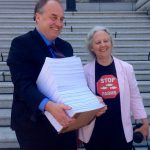 In May, 2015, I was afforded the honour of introducing a petition by 108,848 people who are asking the government to please not issue licences of occupation to salmon farms trying to expand in British Columbia. I also introduced a second petition signed by more than 100 business organizations across the province who supported the individuals who signed the larger petition. The business organizations argued that they are convinced by the published scientific evidence that open net salmon farms are a threat to B.C. wild pacific salmon.
In May, 2015, I was afforded the honour of introducing a petition by 108,848 people who are asking the government to please not issue licences of occupation to salmon farms trying to expand in British Columbia. I also introduced a second petition signed by more than 100 business organizations across the province who supported the individuals who signed the larger petition. The business organizations argued that they are convinced by the published scientific evidence that open net salmon farms are a threat to B.C. wild pacific salmon.
Below I reproduce the exchange I had with Minister Popham as well as the accompanying media release
Video of Question Period Exchange
Question
A. Weaver: The 2017 B.C. election platform states this.
“We will ensure that the salmon farming industry does not endanger wild salmon by implementing the recommendations of the Cohen Commission, keeping farmed sites out of the important salmon migration routes and supporting research and transparent monitoring to minimize the risk of disease transfer from captive to wild fish.“
In addition, the Minister of Transportation and Infrastructure promised First Nation leaders, in Alert Bay on April 23 of 2017:
“We will remove fish farms, we are committed to that, and we can actually form government to make this happen and make sure that these territories and the north Island are clear of fish farms.“
She did so, with respect, as a means or way of convincing First Nation leaders not to vote for the B.C. Green Party.
My question to the Minister of Agriculture is this: what is the government’s plan now to implement the recommendations of the Cohen commission and assist in the transition from ocean-based fish farms to land-based closed-containment systems?
Mr. Speaker: If it was always that friendly.
Answer
Hon. L. Popham: Thank you to the member for Oak Bay–Gordon Head for the question. I appreciate it, and I want to assure the member and the people of British Columbia that our government is deeply committed to protecting B.C.’s wild salmon. It’s essential to our economy, it’s essential to our province, and it’s essential to our B.C. First Nations.
The Cohen commission recommendations are something that we did commit to in our platform, and we are absolutely committed to fulfilling those recommendations. There are federal recommendations and there is B.C.’s portion of those recommendations, and we are committing to do that.
Also, I’m sure the member probably knows that, but I did want to point out that in 2010 there was a Hinkson decision which moved the responsibility for fish health and licensing of fish farms to the federal government. The provincial government has the responsibility for tenures. It’s important to know that at this time, as we’re figuring out where we go next, there are no tenures being approved and no renewal of tenures being approved.
Supplementary Question
A. Weaver: First off, I do wish to thank the official opposition for their support in the question. I’m sure they thought I was going to offer a softball, but this is a very serious question that we would like to actually get details on.
I’d like to acknowledge that this is a very complex multi-jurisdictional issue, but let me be very clear. The Minister of Transportation and Infrastructure was forthright and clear that her government was going to remove fish farms from the migratory tracks of sockeye salmon — period. She said that to First Nation leaders in the north Island and convinced them not to vote for the B.C. Green Party because of that.
Now, my question, again to the Minister of Agriculture, is this. Does she intend, in her mandate, to end the use of open-net fish farms along the migratory passage of sockeye system, as promised to British Columbians by the now Minister of Transportation and Infrastructure?
Answer
Hon. L. Popham: Thank you, Mr. Speaker.
Interjections.
Mr. Speaker: Members, we shall…. The friendliness is wonderful, but we shall hear the minister’s response.
Hon. L. Popham: Thank you, Mr. Speaker, and thank you again for your question. I’m not sure if the member knows, but I am waiting for the recommendations coming from a report from the Minister of Agriculture’s advisory council on finfish aquaculture, which has been looking at the issue. I expect that report to be coming forward with recommendations at the end of this year. While I wait for those recommendations, I have already been on the ground, meeting with stakeholders. I’ve met with First Nations, the industry.
I’ve also sat down with the Minister of Fisheries, Minister LeBlanc from the federal government, and invited him to come sit at the table with us, because I think it’s going to take the provincial government, the federal government, First Nations and industry to sit together as we move forward and figure out the recommendations and how to implement them.
Media Release
Weaver seeks action from government to end ocean based fish farming
For immediate release
September 13, 2017
VICTORIA, B.C. – Andrew Weaver, leader of the B.C. Green caucus, is seeking leadership from the government to protect B.C.’s wild salmon stocks. Weaver questioned Minister of Agriculture during question period, after having sent a letter to the Minister last week.
“Fish farms have long been contentious on the B.C. coast due to concerns about sea lice, disease, escaped non-native species, and the impact these contaminants are having on wild stocks – many of which are already significantly depleted,” Weaver said.
“In April, NDP North Island MLA Claire Travena, now Minister of Transportation, promised that her party would remove fish farms from coastal waters.
“Last week I sent a letter to Minister of Agriculture Lana Popham seeking clarity on when and how the government intends to keep its commitment on this promise. Today in question period, I asked Minister Popham whether her government still intends to end the use of open net fish farms along the migratory paths of wild salmon during this government’s mandate.”
In her response, Minister Popham referenced plans to work with federal and First Nations governments and an upcoming report.
“While this is no doubt a complex multi-jurisdictional issue, the provincial government must play a leading role. The province needs to actively advocate for British Columbian values. They must push the federal government to adopt policies that will protect the wild salmon that are foundational to our coastal communities and ecosystems. I will continue to work with governments and stakeholders to keep this issue a priority.”
-30-
Media contact
Jillian Oliver, Press Secretary
+1 778-650-0597 | jillian.oliver@leg.bc.ca
Comment: Green Party sees chance for a new era in B.C. politics
As published in the Times Colonist on Sunday, June 11th.
On June 22, 87 MLAs will take their seats in the legislature. Some are returning to serve their sixth or seventh term, and many others are just beginning their first. All will serve in a new era of B.C. politics.
British Columbians voted for a minority government, with the B.C. Greens holding the balance of power. In the days that followed, all three parties acknowledged that this presents an historic opportunity to do politics differently.
The results of this election are a clear opportunity to break with the bad habits of the past — political calculation, polarized debates and cynical decisions that prioritize the interests of big-money donors — and to work together to put forth good public policy that will make a difference in the lives of British Columbians.
In order to make these changes a reality, British Columbia needs a stable government. The Green caucus was faced with the responsibility of determining which of the other two parties we would support in forming this government. After lengthy discussions with both parties, we came to an agreement with the B.C. NDP that will provide stability while enabling collaboration across party lines.
Our agreement is based fundamentally on the principle of “good faith and no surprises.” We made this basis of our agreement not only to ensure that we can maintain a stable minority government for four years, but also so that this stability is founded on trust and collaboration.
The principle of good faith and no surprises has enabled minority governments from New Zealand to Scotland to collaborate to enact good public policy.
If all MLAs honour their commitment to work together, it will work for B.C., too.
This begins with a new way for developing policy. Under our agreement, the NDP is required to consult with our caucus as it crafts policy. Through these consultations, we will evaluate their proposals and provide input so that it can earn our support. There will be times when we support legislation introduced by the NDP, and times when we do not, because we will evaluate each bill on an issue-by-issue basis.
Our agreement identifies many areas where we agree on principle, from banning donations of big money, to reforming our electoral system, to reinvigorating our forestry sector, to making sure our children have the public education resources they need to succeed.
British Columbians can expect to see action on these issues in the early days of their new government.
While we will collaborate on many issues with the NDP government, we will remain a distinct caucus. There are many other policy areas where the Greens will advance ideas not shared with other parties. Our caucus ran on a bold, principled platform with a strong vision for B.C., and we will work hard to implement its best ideas.
We will also consider legislation proposed by the other opposition caucus, the B.C. Liberals, and support their bills if we believe they are in the best interests of British Columbians.
In the previous government, we worked with the Liberals to advance legislation to require that post-secondary campuses develop sexual assault policies. Together, we also banned employers from requiring their employees to wear high heels. These examples prove that when we work together across party lines to advance the interests of the people we all serve, government is at its very best.
But before all of this can happen, a new government must be formed.
Christy Clark, as leader of the incumbent government, has indicated that she would like to follow protocol and test the confidence of the house with a throne speech. The first step in following protocol is to elect a Speaker from the government. If the premier is serious about following protocol and working together across party lines, the Liberals will put forward a Speaker and introduce a throne speech in a timely manner.
The Green caucus will honour our agreement with the NDP and support them in forming government.
The first sitting of the house presents an opportunity, perhaps once in a lifetime, to do politics differently. We look forward to working with our colleagues on both sides of the house to uphold our commitment to serve the people of B.C. who entrusted us with their vote.
Andrew Weaver, Sonia Furstenau and Adam Olsen are the three members of the B.C. Green caucus.
Response to Premier Clark’s Site C Letter
Today I received a letter from Premier Clark in which she requested I respond to questions regarding the construction of the Site C Dam.
Premier Clark’s letter follows one sent last week by John Horgan, leader of the B.C. NDP, to Jessica McDonald, President and CEO of B.C. Hydro, requesting the delay of the destruction of two homes pending future review of the Site C Dam by the B.C. Utilities Commission.
Last week, I signed a Confidence and Supply Agreement, indicating that the B.C. Green Caucus would support confidence and supply measures introduced by a potential B.C. NDP minority government. As part of the agreement, both parties agreed that the Site C Dam construction project should be referred to the BC Utilities Commission on the question of economic viability and consequences to British Columbians in the context of the current supply and demand conditions prevailing in the B.C. market. The B.C. Liberal government chose not to put the dam to independent evaluation by the BCUC before moving forward with the project.
Below is a copy of the letter that I sent back to Premier Clark.
June 6, 2017
The Honourable Christy Clark
Premier of British Columbia
West Annex
Parliament Buildings
Victoria, BC V8V 1X4
Dear Premier Clark,
Thank you for your letter in response to Mr. Horgan’s request to delay the relocation of two homes pending future review of the Site C Dam by the BC Utilities Commission.
While I was neither privy to, nor involved in, writing Mr. Horgan’s letter to Ms. McDonald, you will know that for four years I have raised significant and substantive concerns regarding the economics of the Site C project.
Your government has chosen to proceed with the costliest public works project in BC history without adequately analysing its economic viability. Even the chair of the Federal-Provincial Joint Review Panel that reviewed the Site C Dam, Dr. Harry Swain, has criticised the process for not sufficiently evaluating the project’s economic case. In the face of these significant concerns, and despite numerous calls for an independent review by the BC Utilities Commissions, you are about to apparently move the project to the “point of no return”.
Please let me express my disappointment in how your government is choosing to proceed with this project. Your government is turning a significant capital project that potentially poses massive economic risks to British Columbians, into a political debate rather than one informed by evidence and supported by independent analysis.
Your letter asserts that delaying the relocation of two homes will cost BC Hydro ratepayers an estimated $600 million due to the project delay. You further request an indication of my position on the matter.
Before I can comment on these assertions, I require access to the supporting evidence, including but not limited to the signed contracts, the project schedule and the potential alternative project timelines that could allow an independent review to be conducted at minimal cost to the ratepayer.
In addition, I would need briefing notes on the status of existing delays including those associated with the stability of the north bank as well as the acquisition of and compliance with any environmental permits.
I would be pleased to answer your questions on the assumption that the information requested will be forthcoming in a timely manner.
Best wishes,
Dr. Andrew Weaver, OBC, FRSC
Leader, BC Green Party

